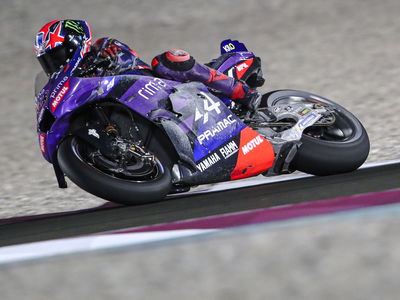Aprilia to supply full CRT MotoGP bike?

Aprilia, whose RSV4 Superbike engine has long been tipped as a possible powerplant for the new range of CRT MotoGP bikes, also looks set to build a chassis for the new privateer category.
Factory test rider Alex Hofmann is gathering data by lapping with Bridgestone tyres on an RSV4 at this week's Valencia test.
"There are still no final contracts," GPOne.com reports Aprilia's Gigi Dall'Igna as saying, "and we do not know yet whether we'll use gear driven cams or motors like those that currently run in Superbike, because the difference is minimal. The frames, however, obviously will be different. The frame will not be as used in SBK."
The possibility of a full Aprilia bike explains why some CRTs have announced they intend to use Aprilia engines, but have been coy about the chassis supplier.
CRTs (Claiming Rule Teams) are allowed extra fuel and engine changes relative to next year's full factory 1000cc MotoGP bikes from Honda, Yamaha and Ducati.
CRT status must be approved by the Grand Prix Commission, in order to avoid under-cover factory entries, but with all three factories reducing machine numbers for 2012 - and Suzuki leaving - MotoGP will surely be grateful for any indirect Aprilia involvement.
Aprilia ran a factory MotoGP team from 2002-2004, when it supplied motorcycles to all three grand prix classes.
The premier-class withdraw was followed by an exit from the intermediate category, when it switched from 250cc to Moto2 in 2010. Aprilia, which won the final 125cc title with Aspar's Nico Terol this year, is unlikely to join the replacement Moto3 class.
CRT would thus be the only way of keeping Aprilia - whose RSV4 won the 2010 World Superbike championship with Max Biaggi - involved in grand prix.
Aspar, PBM and Speed Master look most likely to use an Aprilia CRT bike, with former Pramac Ducati rider Randy de Puniet being linked with an Aspar ride following Suzuki's exit.
Dorna CEO Carmelo Ezpeleta is keen to follow F1's format of having specialist independent race teams, working in partnership with manufacturers where possible - but able to survive without them.
The CRT rules are seen as the first step along the path of breaking MotoGP's dependency on the major manufacturers, which provided all 17 bikes in this year's championship but are struggling with the costs involved.
Next year's grid is expected to contain just 12 factory-built bikes, with the rest of the grid - likely to consist of around 20 riders - made up of CRTs.












